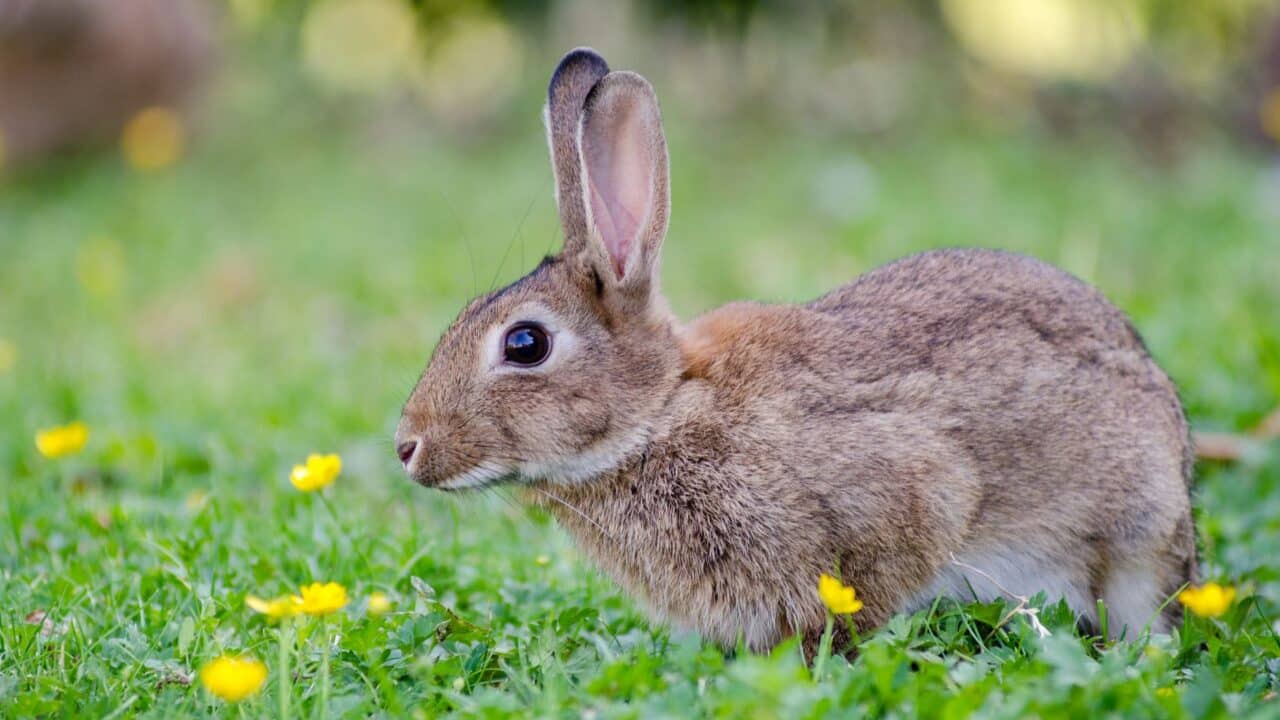Rabbit manure is a nutrient-rich, safe-to-use fertilizer that can be applied directly to your garden without composting. It’s packed with nitrogen, phosphorus, and potassium — plus it won’t burn plants, making it ideal for vegetable beds, flowers, and fruit trees alike. Bonus: rabbits happily eat many common weeds and garden scraps, creating a full-circle system.
Introduction
If you’re raising rabbits — or considering it — one of the biggest hidden benefits is their poop. Unlike chicken or duck manure, rabbit droppings are a cold manure, meaning they don’t need composting before use. In this guide, we’ll answer every question you might have about using rabbit poop in the garden: how to collect it, apply it, store it, and even how to grow the food that feeds the rabbits in return.
What Makes Rabbit Poop So Good for Gardens?
Nutrient Breakdown
On average, rabbit manure contains:
-
Nitrogen (N): ~2.4% – encourages leafy green growth
-
Phosphorus (P): ~1.4% – supports root development, flowers, and fruiting
-
Potassium (K): ~0.6% – helps plants resist stress and disease
-
Plus trace minerals like calcium, magnesium, and boron
These numbers may seem modest compared to store-bought fertilizers, but that’s part of what makes rabbit manure so useful — it delivers nutrients slowly and gently, without overwhelming the soil.
How It Compares to Store-Bought Fertilizers
| Fertilizer Type | N-P-K Ratio | Strength | Burn Risk | Use Case |
|---|---|---|---|---|
| Rabbit Manure | ~2.4–1.4–0.6 | Mild | Very low | Safe to apply fresh or composted |
| Miracle-Gro (synthetic) | 24–8–16 | Very high | High if overused | Fast-acting feed for big results |
| Espoma Plant-Tone (organic) | 5–3–3 | Moderate | Low | Balanced, slow-release organic blend |
| Finished Compost | ~0.5–0.5–0.5 | Gentle | None | Great for soil texture and biology |
What is burn risk?
It refers to the chance of damaging plants by applying too much concentrated fertilizer — especially synthetic products with high nitrogen levels. This can cause scorched leaves, stunted growth, or even plant death. Rabbit manure carries virtually no burn risk, even when applied fresh.
The Long-Term Benefit: Healthier Soil, Naturally
While rabbit manure might not deliver explosive growth overnight, it plays the long game — improving your soil’s structure, microbial life, and moisture retention. It’s ideal for gardeners who want to:
-
Build fertility without relying on chemicals
-
Reduce reliance on bagged products
-
Close the loop between animal care and food production
-
Grow resilient, low-input gardens over time
Instead of feeding plants directly like a synthetic fertilizer, rabbit manure feeds the soil — and healthy soil grows better plants, year after year.
Cold Manure = No Composting Needed
Unlike chicken manure, rabbit poop won’t burn plants and is safe to apply directly to soil.
Common Questions About Using Rabbit Poop in the Garden
Can You Use Rabbit Poop Directly in the Garden?
Yes! Rabbit droppings can be used straight from the hutch to the garden. No composting or aging required.
How Do You Apply Rabbit Poop to Plants?
-
Broadcast it around flowers, veggies, or trees as a top dressing
-
Bury it in planting holes for a slow-release boost
-
Make rabbit manure tea for liquid feeding (steep in water for 2–3 days, then strain and pour)
Is Rabbit Poop Safe for Edible Gardens?
Absolutely. Because it’s cold and low in pathogens (especially compared to meat-eating animals), it’s safe for use around vegetables, herbs, and fruit trees.
Will It Smell or Attract Pests?
Not usually. Rabbit poop is dry and pelletized, which means it has little odor and won’t attract flies like wetter manures.
How Long Does Rabbit Poop Take to Break Down in Soil?
In most cases, it breaks down within a few weeks, slowly releasing nutrients over time.
Can You Compost Rabbit Poop Anyway?
Yes! It combines well with kitchen scraps and straw bedding. Composting can enhance microbial activity and bulk up your soil amendments.
Can you use rabbit poop on your lawn?
Yes, rabbit manure can be used on lawns, and it’s a great way to add organic nutrients without burning the grass. You can broadcast it by hand or with a spreader if it’s dry and pelletized. Over time, it improves soil health, boosts microbial activity, and encourages deeper root growth. It won’t cause the instant green-up that synthetic lawn fertilizers do, but regular applications can help build a stronger, more drought-tolerant lawn naturally.
How to Collect and Store Rabbit Poop
Best Bedding for Easy Collection
-
Wire-bottom cages allow droppings to fall through
-
Use trays with straw, pine pellets, or wood shavings underneath for easy scooping
-
Avoid cedar or overly dusty bedding — they can cause respiratory issues
How to Store It
-
Store in a 5-gallon bucket with ventilation
-
Mix with bedding or hay to bulk it up
-
Avoid letting it get too wet — this can lead to mold or anaerobic smells
How Much Rabbit Poop Do You Need?
-
One rabbit = 1–1.5 pounds per week
-
3–4 rabbits can easily fertilize a small garden year-round
-
You can apply about 1–2 cups per square foot of garden bed, once or twice per season
Rabbit Poop vs. Other Animal Manures
| Manure Type | Needs Composting? | Nitrogen (N) | Odor | Notes |
|---|---|---|---|---|
| Rabbit | No | High | Low | Pelletized, clean, safe |
| Chicken | Yes | Very high | Strong | Can burn plants if fresh |
| Duck | Yes | Moderate | Moderate | Wet, messy, high volume |
| Cow/horse | Yes | Lower | Earthy | Great for bulk soil building |
Growing Food for Your Rabbits — That Also Benefits the Garden
Weeds Rabbits Love (and You Can Grow On Purpose)
-
Dandelion (root & leaf)
-
Plantain
-
Clover
-
Chickweed
-
Lamb’s quarters
-
Mallow
-
Wild violets
Easy Garden Crops to Feed Rabbits
-
Kale, collards, and chard
-
Turnip & beet greens
-
Carrot tops
-
Parsley & basil
-
Sunflower leaves
-
Squash vines & leaves (in moderation)
💡 Many of these can be grown in excess or as intercrops to reduce rabbit feed costs and enrich your soil.
Creating a Closed Loop: Rabbits in the Regenerative Garden
Using rabbits as composters turns weeds and kitchen scraps into rich fertilizer. Here’s how to build the loop:
-
Feed them garden weeds and trimmings
-
Collect their manure mixed with bedding
-
Use fresh in beds or compost into bulk soil amendments
-
Grow more rabbit-friendly crops in improved soil
The result? Less food waste, lower feed bills, healthier soil, and happier plants.
Bonus Tips for Rabbit Manure Success
Can You Use It in Seed Starting Mix?
If well composted and sifted, yes — mix with coco coir or peat and vermiculite.
Can You Sell Rabbit Poop?
Yes! Market as “cold manure” for organic growers. Sell in gallon bags, composted blends, or tea concentrate.
Is Urine a Problem?
Rabbit urine is high in ammonia and can smell — if you’re collecting droppings with urine-soaked bedding, it’s best to compost that mix first.
What If It’s Mixed with Bedding?
No problem! Straw, hay, or wood shavings will help bulk up your compost. Just note that pine shavings take longer to break down.
FAQ
Can rabbit poop burn plants?
No. It’s considered cold manure and is safe to apply directly without risk of burning.
Can I use rabbit poop year-round?
Yes! Store it dry and apply as needed. It won’t lose potency if kept properly.
Is it safe to use rabbit poop around root crops like carrots or potatoes?
Yes. Just mix into the top few inches of soil — there’s minimal risk of contamination.
Do I need to wear gloves when handling rabbit manure?
It’s not required, but it’s good practice, especially if bedding or urine is mixed in.
How do I make rabbit manure tea?
Fill a bucket with water, drop in 2–3 cups of rabbit pellets, steep for 2–3 days, stir occasionally, and apply as liquid fertilizer.

